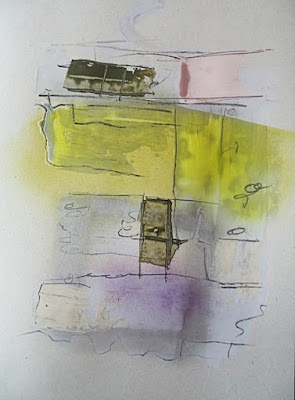This month, I’ve been reminded how in the pre-internet days of the CND and the Greenham Common peace camp, activists used telephone trees so that groups of protestors could be swiftly mobilised for sit-ins, mass trespass and marches anti-all things nuclear, while keeping their plans under the radar of the authorities. This was people power in action across a distributed network, with each person needing to make just one phone call.
In 1968, inspired by fellow art student Brian Eno’s call to action and invigorated by a wave of student unrest in the UK and Europe, I marched in solidarity with Hornsey College and Guildford School art students, who were protesting against unfair course changes. Later, it was the “milk snatcher” policies of then education minister, Margaret Thatcher, that galvanised me into action. By the time I finished my post-graduate course, I had found my voice and seen that passionate people working in consort can make a difference.
culture professionals
Join the Culture Professionals Network
Sign up today and receive exclusive member newsletters, networking opportunities, member-only discounts and more.
Click here
It’s clear that getting the message across about the value of the arts to society in this unforgiving political climate needs a bit more passion and fewer generic advocacy tools. While 2010’s Save the Arts campaign fell short of the 100,000 signatures needed to win the government’s attention, the agility of the Precarious Workers Brigade hits the mark through its campaigns with others against poor working conditions and inequality in the arts and elsewhere.
It also needs to be about people. Vital to campaigns for the arts are dedicated individuals such as the artist Bob and Roberta Smith, who stood against former education secretary Michael Gove in the general election, in protest against the downgrading of arts in schools. There’s also playwright Fin Kennedy, whose independent report in 2013, In Battalions, confounded culture minister Ed Vaizey’s misassumptions when the theatre world faced cuts.
Refreshingly, it was north-east England’s artists and arts freelancers, the people whose voices are often absent when arts policies are planned, who set the agenda for May’s open space gatherings (where participants create and manage the agenda) helping design the Case for Culture. The insights of 100 artists, makers, writers, poets, storytellers, community artists and photographers, plus a posse of independent arts project managers and educators, were brought to bear on topics ranging from internationalism to leadership, and science-art collaboration to achieving world peace through art. Everyone fed directly into shaping a vibrant and distinctive cultural fabric for the region by 2030.
In terms of fostering inclusivity, we could also learn a lot from how Scotland does things: that is, fast and with flair. Culture: What Next? – which is not to be confused with the What Next? movement – provoked immediate responses from artists and cultural workers on the future of Scottish culture post the general election. A 16-point Cultural affirmation published soon afterwards by event collaborator Tracs articulates the right to, and value of, arts and culture in political, constitutional and social terms: “We artists, cultural workers, educators and citizens of Scotland, commit ourselves through our creative practice to the free development of human potential, to social and environmental justice, equality and sustainability.”
The urgency of reframing the cultural landscape post-election was also under debate at one of Arts Development UK’s mass gatherings. I warmed to a particular provocation by Laurie Peake of Lancashire’s embryonic Super Slow Way, an organisation whose mission it is to bring local people and artists together. Peake said she visualises the current ecology in geological terms. There are the art world stars on lofty peaks, an invisible and dormant culture in deep underground seams, and everything else in the valleys between.
In England, while new Arts Council chief, Darren Henley, has agreed to some “rebalancing” of arts funding, which will increase spend in the regions a bit over the next three years, there’s no doubt that it will be the bricks and mortar organisations that will get the lion’s share. The potential of those valley dwellers and the dormant talent will be left to the vagaries of occasional arts grants.
Self-employed in the arts: the good, the bad and the future
Susan Jones
Read more
My own analysis, which is admittedly from a practice-based perspective and done a while ago, identified that flatter structures that organically cross-fertilise are more productive. If we consider our ambitions for the future of the arts solely in terms of their relevance to us and the now, how will we get to that place of uncertainty and risk from which genuine innovation and widespread community engagement will emerge?
Poet Sean O’Brien puts it better. Speaking on Radio 3’s Free Thinking programme in May, he observed, in a discussion on the contemporary relevance of Dante, that “we may be looking through the wrong end of the telescope”.
If you want to forecast what a future healthy and vibrant ecology for the arts will look like, I propose that those at the top table just need to move their seats (perhaps stand outside in the corridor) so they can vision what the arts could be from a fresh perspective.
Join our community of arts, culture and creative professionals by signing up free to the Guardian Culture Pros Network.







No comments:
Post a Comment
Note: only a member of this blog may post a comment.